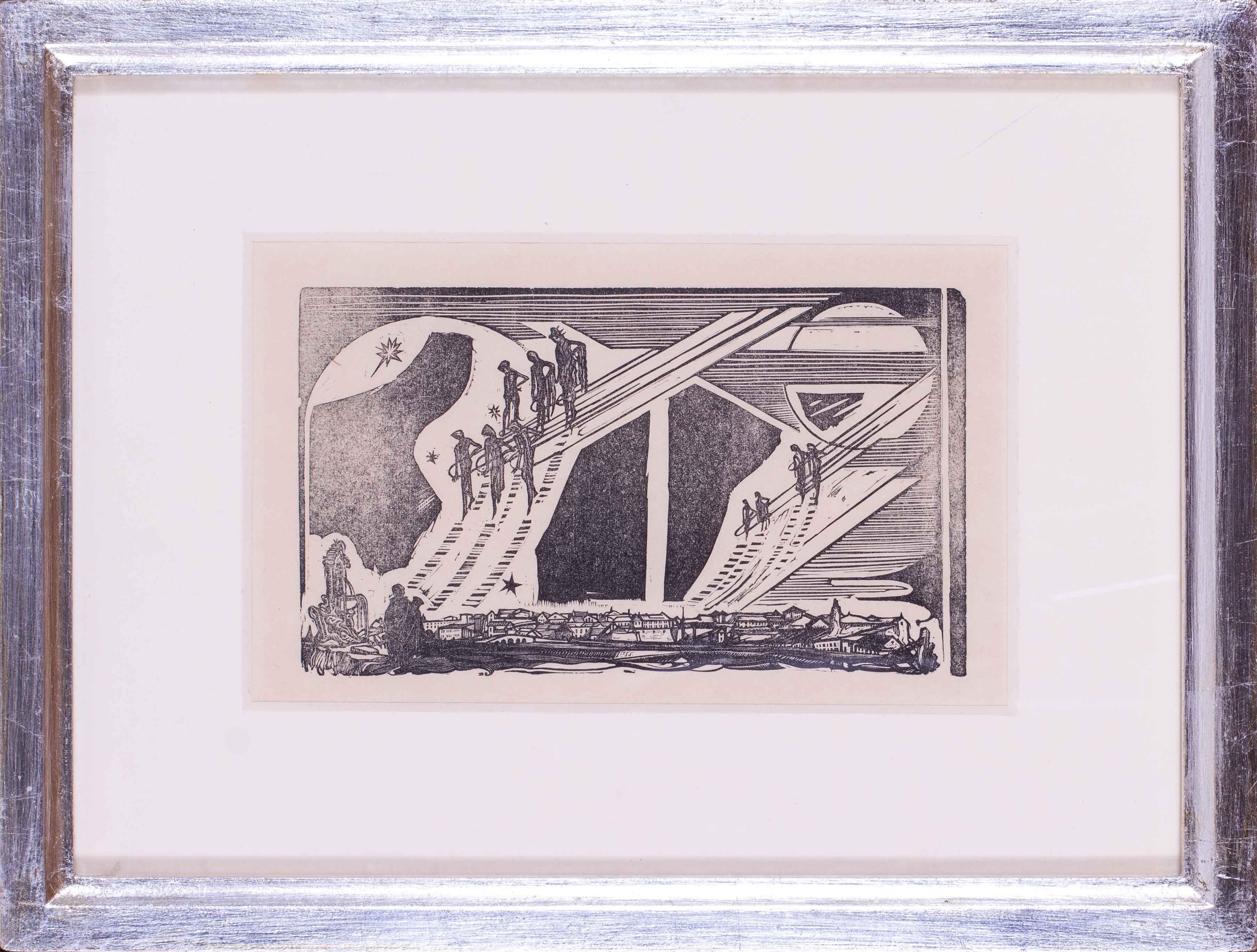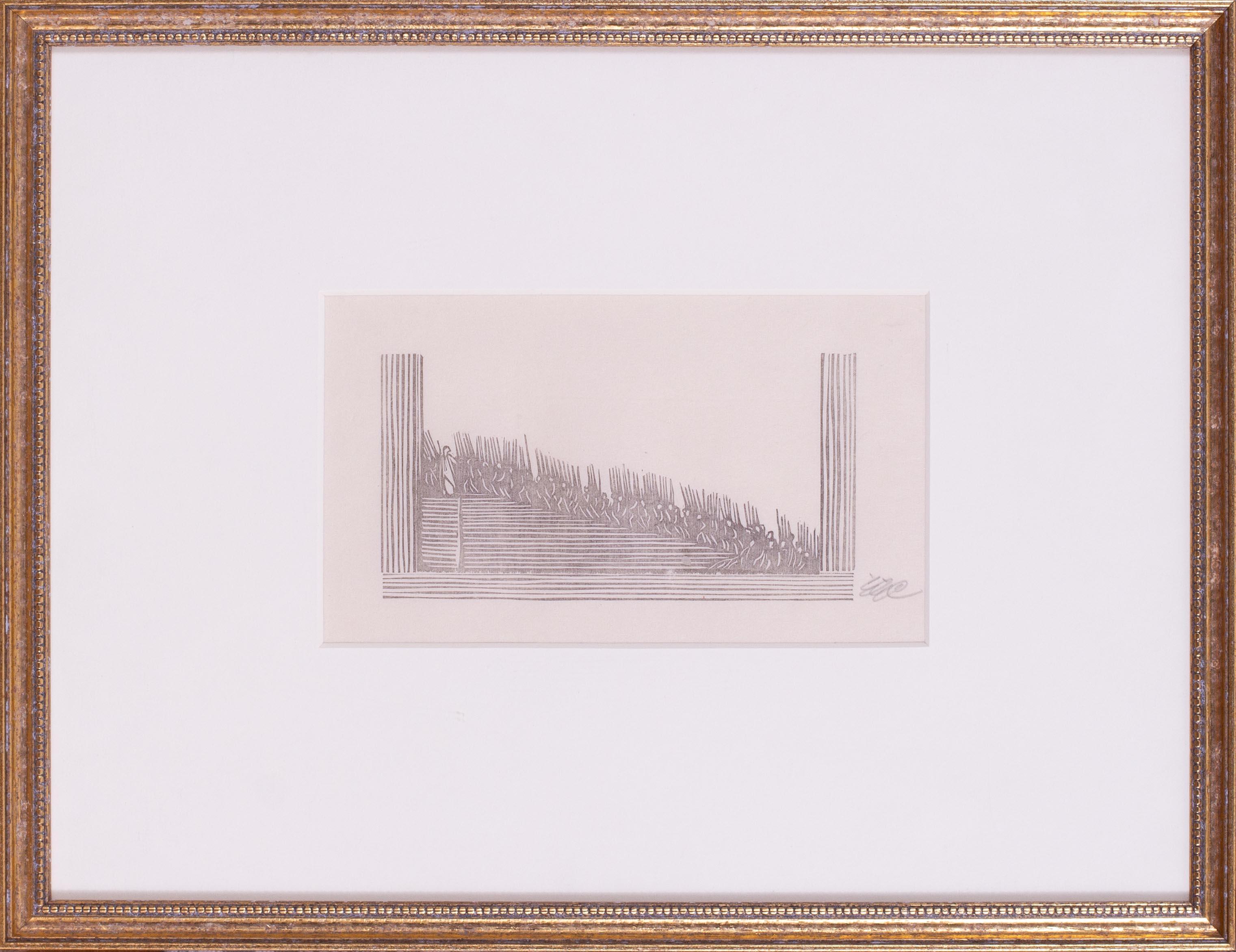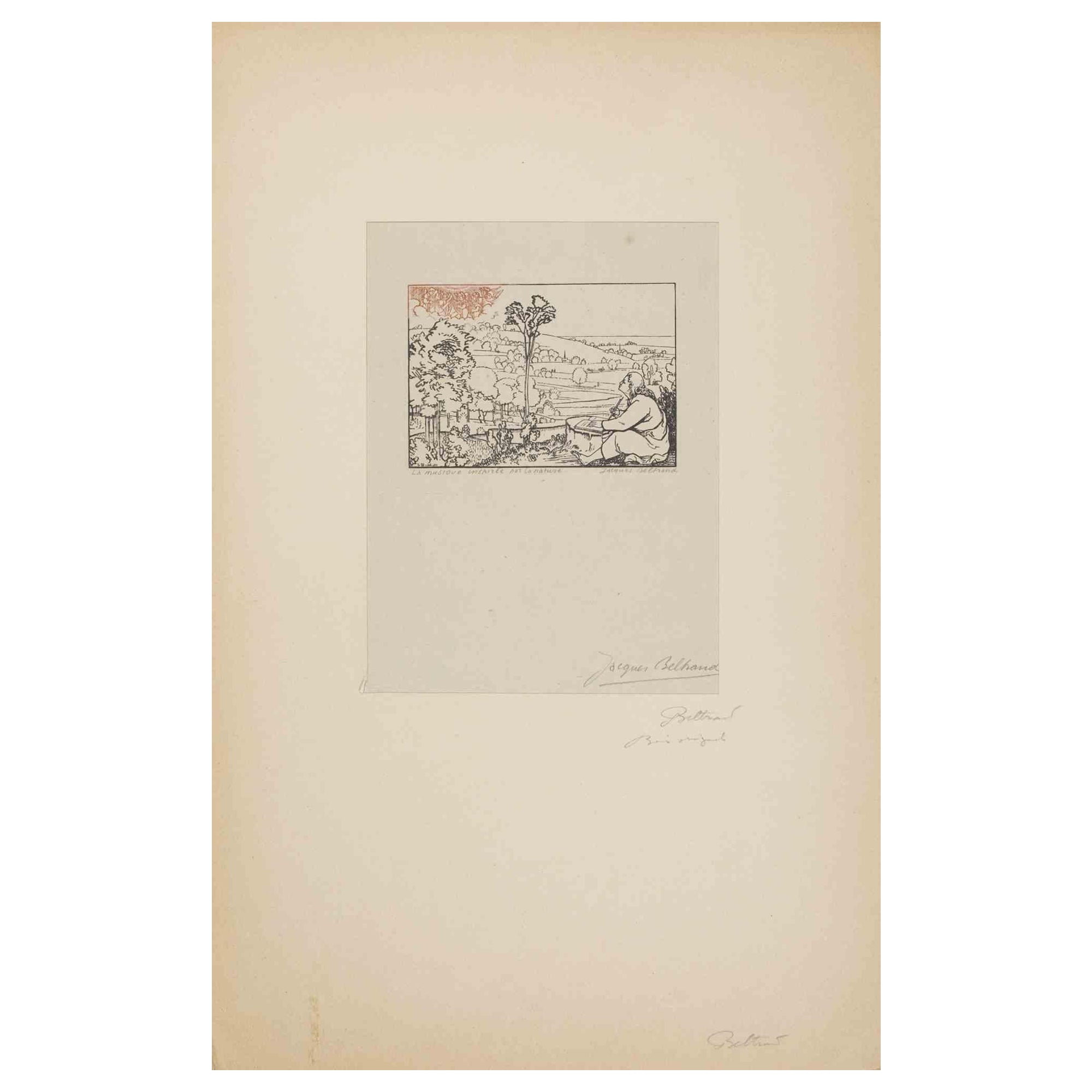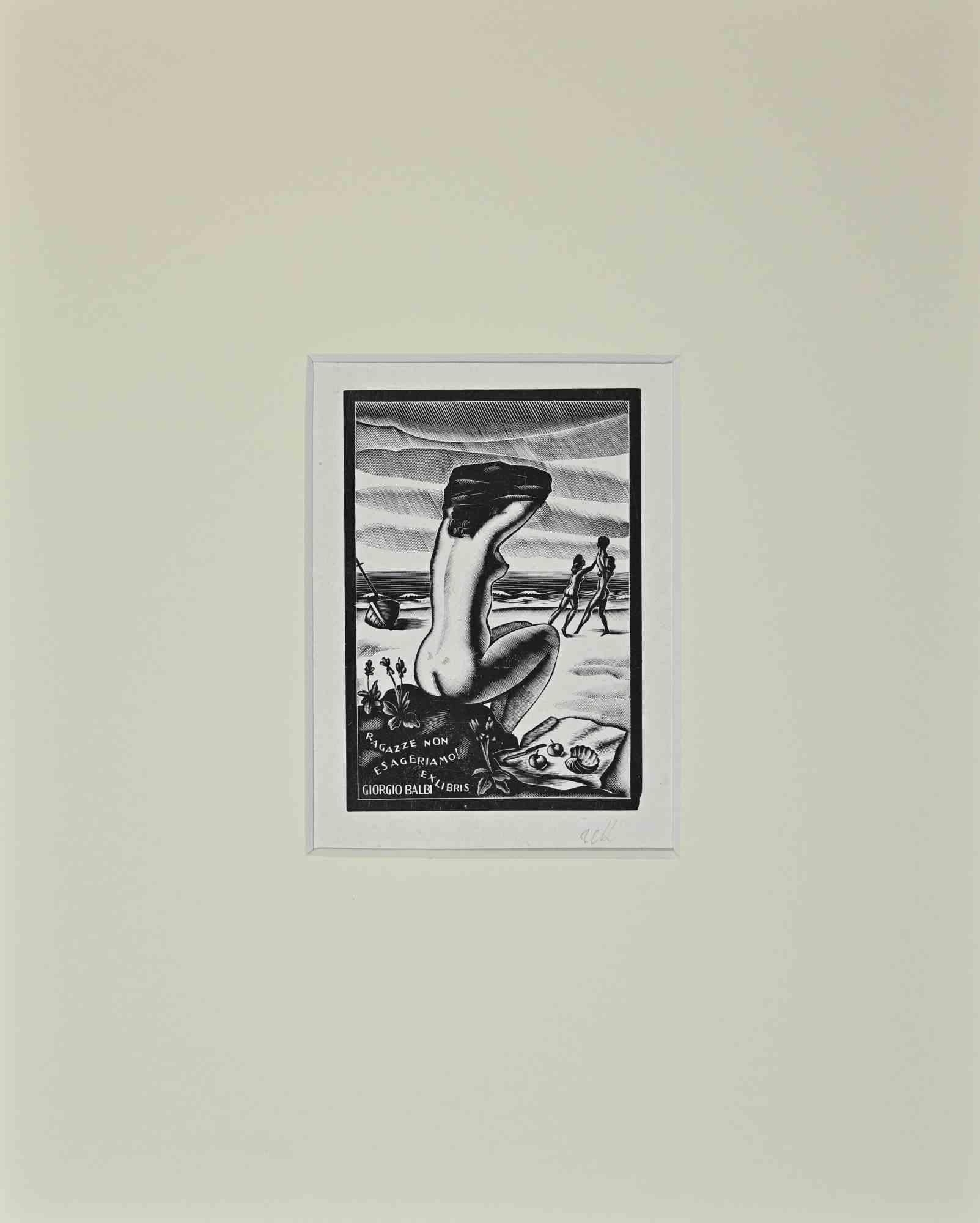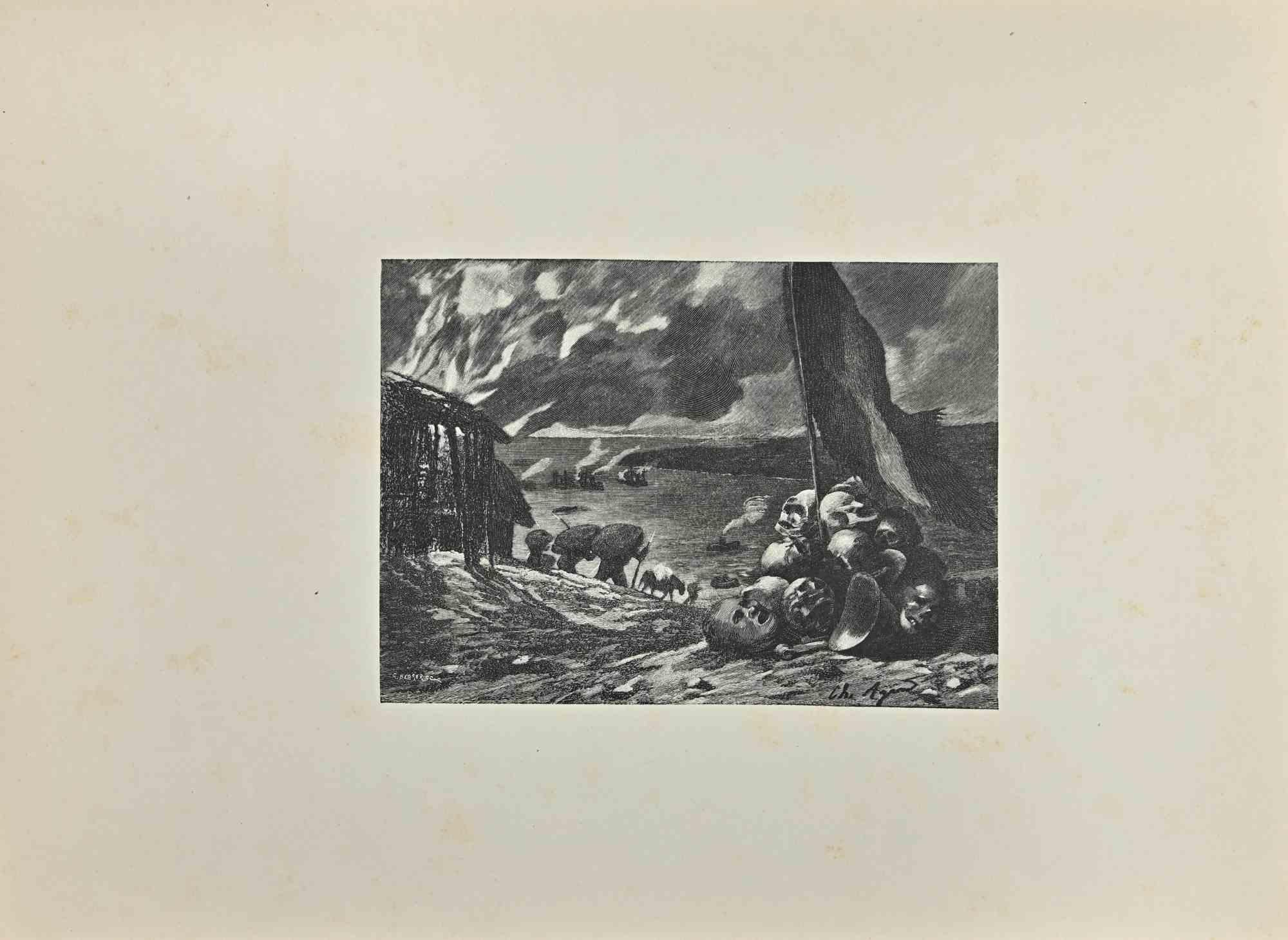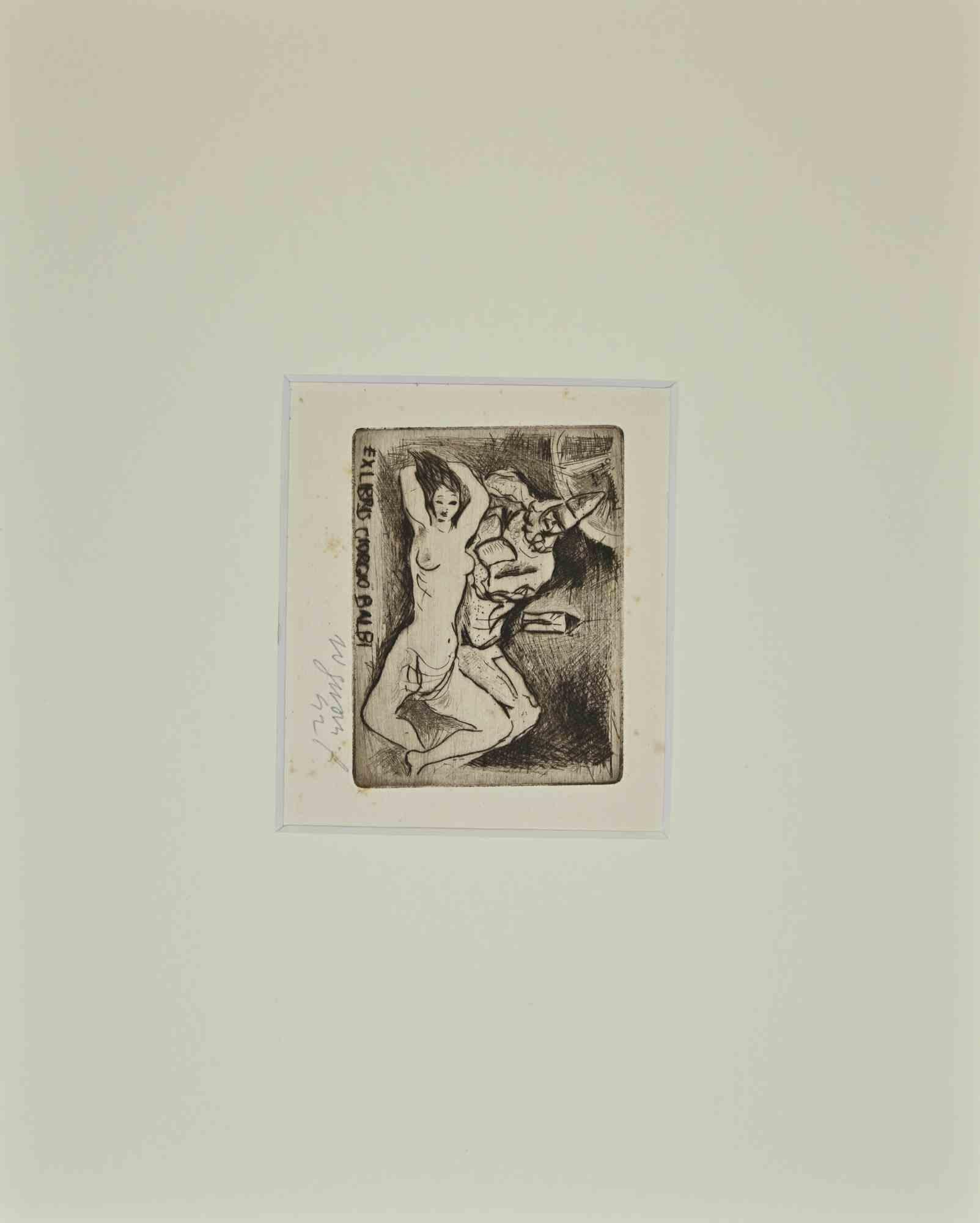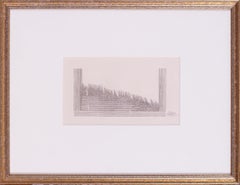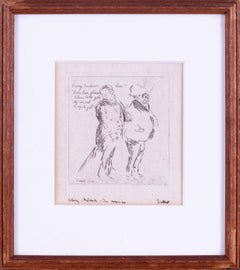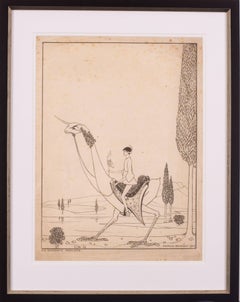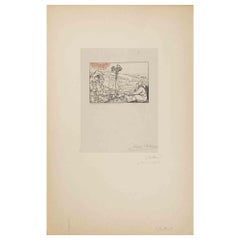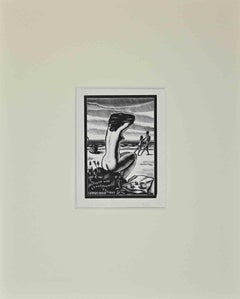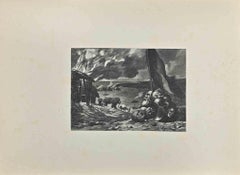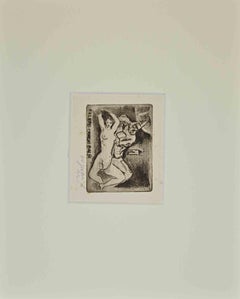Items Similar to British Art Deco woodcut print of a figure creeping up on a foe
Want more images or videos?
Request additional images or videos from the seller
1 of 6
Edward Henry Gordon CraigBritish Art Deco woodcut print of a figure creeping up on a foe
$454.25
£340
€394.48
CA$641.36
A$703.81
CHF 367.61
MX$8,414.89
NOK 4,656.38
SEK 4,342.95
DKK 2,946.24
About the Item
Edward Henry Gordon Craig (British, 1872-1966)
Creeping up on a foe
Woodcut
Inscribed `Only 7 copies printed – copy 7’ (under the mount)
4.1/8 x 4.5/8 in. (10.5 x 11.8 cm.)
Craig was one of the most influential designers of the early twentieth century. He trained under Henry Irving and worked as an actor before designing a series of productions that demonstrate the influence of symbolism. His artistic collaborators included Otto Brahm, Eleonora Duse, Isadora Duncan and Konstantin Stanislavski. In 1905, he published The Art of the Theatre, which called for the development of a non-naturalistic æsthetic. From 1908 to 1929, he edited a quarterly journal entitled The Mask, which presented Craig’s theories.
- Creator:Edward Henry Gordon Craig (1872 - 1966, British)
- Dimensions:Height: 4.13 in (10.5 cm)Width: 4.63 in (11.77 cm)Depth: 1 in (2.54 cm)
- Medium:
- Movement & Style:
- Period:
- Condition:In good order in a thick cream mount and hand finished silvered frame.
- Gallery Location:Petworth, GB
- Reference Number:1stDibs: LU540312180862
About the Seller
4.9
Platinum Seller
Premium sellers with a 4.7+ rating and 24-hour response times
Established in 2010
1stDibs seller since 2017
275 sales on 1stDibs
Typical response time: 3 hours
- ShippingRetrieving quote...Shipping from: Petworth, United Kingdom
- Return Policy
More From This Seller
View AllBritish Art Deco woodcut by early 20th Century artist Edward Gordon Craig
Located in Petworth, West Sussex
Edward Henry Gordon Craig (British, 1872-1966)
La Procession Nocturne (state 1)
Woodcut
Inscribed `State 1 only 8 copies’ (lower left under mount)
5.1/8 ...
Category
20th Century Art Deco Figurative Prints
Materials
Woodcut
Signed art deco woodcut, by Edward Gordon Craig 'Army of Fortinbras'
Located in Petworth, West Sussex
Edward Gordon Craig (British, 1872 – 1966)
Army of Fortinbras
Woodcut
Signed with monogram (lower right)
4.3/4 x 8.1/4 in. (12 x 20.8cm.)
A beauti...
Category
20th Century Art Deco Figurative Prints
Materials
Woodcut
Signed Walter Richard Sickert etching, 1922 of Harry Anderson – in memoriam
Located in Petworth, West Sussex
Walter Richard Sickert ARA (British, 1860 – 1942)
Harry Anderson – in memoriam
etching 1922
signed and titled in ink (lower edge)
5.1/8 x 4.1/2 in. (13 x ...
Category
20th Century English School Figurative Prints
Materials
Etching
Original early 20th Century German signed lithograph by Marcus Behmer
By Marcus Behmer
Located in Petworth, West Sussex
Marcus Behmer (German, 1879 – 1958)
Die Geravbte orchidee (The robbed orchid), 1903
Signed ‘Marcus Behmer’ (lower right in pencil)
Lithograph on paper
16.1/8 x 12in. (40.8 x 30.5cm.)
It is apparent Behmer is influenced by the work of Aubrey Beardsley, though this work is no less beautiful in its execution. Little is known regarding his connections to Oscar Wilde though he is obviously an admirer and has many similarities with his private life and incarceration in prison. These works were a personal gift to Baron Detlev von Hadeln, the aristocrat and prominent art historian of the age.
Behmer is known to be, since 1903, a member in the first ever homosexual organization in Berlin and was thus probably a part of Adolf Brand’s circle, and may have contributed to Brand’s publication Der Eigene. Until now, few know that Behmer was sentenced in April 1937 by a court in Konstanz to imprisonment for two years, being arrested in Freiburg and at other locations in southern Germany for being a homosexual. At times he was given the opportunity to work as an artist in prison. The works produced in this period are mostly calligraphic designed tablets with Greek text (prayers and Bible quotes...
Category
Early 20th Century Art Nouveau More Prints
Materials
Lithograph
British expressive, mid century watercolour 'A classical allegory' Basil Town
Located in Petworth, West Sussex
Norman Basil Town (British, 1915 – 1987)
A classical allegory
Pen and ink
6.3/4 x 9.1/4 in. (17.2 x 23.3 cm.)
Norman Basil Town (1905–1984) was a British artist known for his evocat...
Category
20th Century Expressionist Figurative Drawings and Watercolors
Materials
Paper, Ink, Pen
British, early 20th Century etching of a lady serving tea in a theatre
Located in Petworth, West Sussex
Mary Viola Paterson (British, 1899 – 1981)
Serving tea at the theatre
Etching
Signed ‘V Paterson’, in pencil (lower right), and number ‘2.’
5.3/4 x 3.3/4 in. (14.7 x 9.5 cm.) (to pla...
Category
Early 20th Century Art Nouveau Figurative Prints
Materials
Etching
You May Also Like
Landscape - Woodcut by Jacques Bethand - Early 20th century
Located in Roma, IT
Landscape is an original woodcut, realized by Jacques Bethand in the early 20th Century.
Good conditions.
The artwork is represented through soft pencil strokes.
Category
Early 20th Century Modern Figurative Prints
Materials
Woodcut
Ex Libris Giorgio Balbi - Etching - Mid-20th Century
Located in Roma, IT
Ex Libris Giorgio Balbi is an artwork realized by Italo Zetti in the mid-20th Century .
Woodcut, 12 x 8,5 cm; It includes passepartout 24 x 30 cm.
Hand signed bottom right.
Good ...
Category
Mid-20th Century Modern Figurative Prints
Materials
Paper, Etching
$230 Sale Price
30% Off
Shadowing Death - Woodcut Print by Georges Berger - Early 20th Century
By Georges Berger
Located in Roma, IT
Shadowing Death is a woodcut print on paper realized by French artist in 1900s G. Berger.
Signed on the plate on the lower right.
The state of preservation is very good.
The artwork represents the dark scenery of skulls and dead in a dark stormy...
Category
Early 20th Century Modern Figurative Prints
Materials
Woodcut
Ex Libris Giorgio Balbi - Woodcut - Mid-20th Century
By Franco Rognoni
Located in Roma, IT
Ex Libris Giorgio Balbi is an artwork realized by Franco Rognoni, in 1942.
Etching, 9 x 10 cm; It includes passepartout 24 x 30 cm.
Handsigned and dated bottom right.
Good condit...
Category
1940s Modern Figurative Prints
Materials
Paper, Woodcut
$205 Sale Price
30% Off
Figure - Original Woodcut on Paper by Adolfo Hireny - Early 20th Century
Located in Roma, IT
Figure is an original woodcut artwork realized by the artist Adolfo Hireny.
Aged conditions with consumed margins and foxing on the image.
The artwork represents a figure, skillful...
Category
Early 20th Century Modern Figurative Prints
Materials
Woodcut
Historical Scene - Original Woodcut Print by Mino Maccari - Mid-20th Century
By Mino Maccari
Located in Roma, IT
Historical Scene is an original print realized by Mino Maccari in the Mid-20th Century.
Beautiful black and white woodcut print on ivory-colored paper. Included a passport: 35 x 28 ...
Category
Mid-20th Century Modern Figurative Prints
Materials
Woodcut
